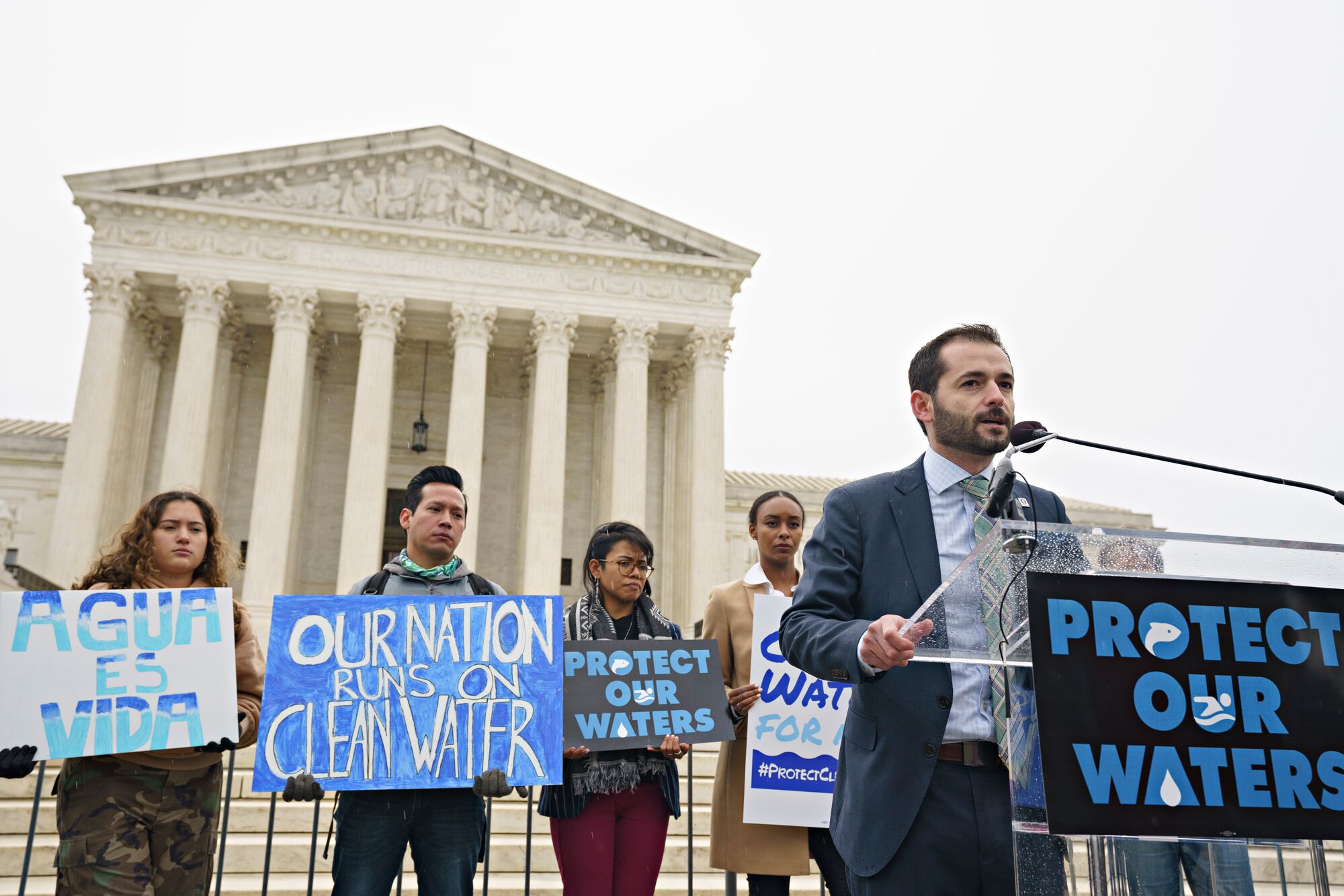Earthjustice goes to court for our planet.
We’re here because the earth needs a good lawyer.
Supreme Court Catastrophically Undermines Clean Water Protections
This page was published 2 years ago. Find the latest on Earthjustice’s work.
The Supreme Court just severely weakened the Clean Water Act. Its ruling in Sackett v. Environmental Protection Agency drastically limits the kinds of wetlands that the law protects from pollution. More than half of the 118 million acres of wetlands in the United States are threatened by this ruling. Here’s what you need to know about this anti-environment, anti-science decision — and what we’ll do next to fight for clean water protections.
The Facts of the Case
- The plaintiffs: The Sacketts bought a lot near Idaho’s Priest Lake that included wetlands the Environmental Protection Agency (EPA) had already determined were protected by the Clean Water Act.
- Polluting without a permit: The Sacketts dumped 1,700 cubic yards (about half the volume of an Olympic-size swimming pool) of gravel and sand into those wetlands without applying for the requisite permit; as the owners of a construction and excavation company, they surely knew better.
- Going to court: When the EPA discovered the unpermitted discharges, it told the Sacketts to undo the damage they caused. They sued instead, starting a legal battle that reached the Supreme Court.
- The Sacketts’ industrial allies: The Sacketts were represented by the Pacific Legal Foundation, a pro-industry group that seeks to dismantle key environmental protections.
- Threats to Tribes’ water: Earthjustice filed an amicus brief to the Supreme Court on behalf of our clients — 18 Tribes who rely on waterways flowing through their lands for food, economy, culture, and more — in support of water protections.
Why Wetlands Matter
- The text of the Clean Water Act says the law is intended to protect “the waters of the United States.”
- What is a “water of the U.S.”? For decades, developers and other polluting industries have been arguing that certain water bodies, including wetlands, do not actually count as “waters of the U.S.” because they are not navigable. It would be convenient for these industries if this were so, because then they would not need a federal permit to exploit, contaminate, or destroy these waters.
- Scientists say wetlands need protection: The Clean Water Act puts scientists and experts at government agencies in charge of determining which waters require protection to fulfill the law’s goals. These agencies have determined that “waters of the U.S.” includes wetlands.
- This makes sense: All water is connected. Pollution that goes into wetlands can easily spread to lakes, rivers, and other drinking water sources. (Read about some of the waters now at risk.) From a scientific perspective no wetland is ever indistinguishable from an adjoining water, despite what this court has ruled.
- Wetlands are critical habitats for fish, waterfowl, and other wildlife. They also shield communities from the destructive power of floods and storms. This shielding is particularly important now, as communities are already struggling with extreme weather and natural disasters brought on by climate change.
The Sackett Ruling Threatens All U.S. Waters
- Contrary to science: The Sacketts and their industrial allies asked the Supreme Court to decide that “waters of the U.S.” means something very different than what experts and scientists say it does. They asked the court to rule that most wetlands are not protected by the Clean Water Act.
- In a 5-4 decision, the court agreed with polluters, eliminating longstanding protections for millions of acres of wetlands. This decision is the culmination of decades of deregulatory advocacy and attacks on the Clean Water Act by corporate polluters and developers.
- Disregard for judicial restraint: In January, the Army Corps and the EPA finalized an updated definition of “waters of the U.S.” based on extensive scientific research. By junking this work, the court’s conservative justices demonstrated a worrisome disregard for science and the principle of judicial restraint.
- A concerning trend: The court’s conservative supermajority already demonstrated eagerness to pursue a deregulatory, pro-industry, and anti-environment agenda last term when it restricted the government’s ability to fight climate change in West Virginia v. EPA. Together, these cases raise deep concerns about the future of bedrock environmental laws.
